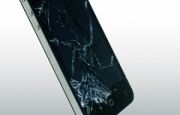R35m more for struggling Dinaledi schools
Despite struggling to meet maths and science targets over the years, the Department of Basic Education (DBE) is set to spend an additional R35.5 million on its Dinaledi schools programme over the next three years.
Faced with decreasing enrolments in both maths and science and poor pass rates across all provinces, the department has failed to achieve its goals with the Dinaledi programme.
Speaking during her budget presentation – Basic Education minister, Angie Motshekga, noted that despite the performance over the years, more money would be pumped into the programme that was supposed to contribute to the skills deficits in the economy.
“Given the key role of gateway subjects in accelerating economic transformation and growth, we will do more to improve performance in Mathematics and Science. We’re already developing a maths and technology strategy to reinforce the Dinaledi Schools programme which has received a conditional grant amounting to R70 million in 2011/12, and will reach R105.5 million in 2013/14,” Motshekga revealed.
However questions will be raised on whether increasing funding will improve the performance of the schools, which have so far failed to make a significant impact on maths and science education in the country.
The number of students enrolling for maths in Dinaledi schools decreased in 2009 [50 921] from 2008 enrolments which totalled 53 469 and the total uptake decreased again in 2010.
Physical science enrolments weren’t any better with a decrease from 40 379 in 2008 to 39 445 in 2009. In 2010, a total of 36 861 students wrote physical science.
In 2001, the Department of Education launched the National Strategy for Mathematics, Science and Technology Education (NSMSTE) in an attempt to improve the quality of teaching and learning in Mathematics and Science.
In 2005 government re-affirmed its commitment to the NSMSTE by reviewing the Strategy and setting a target of doubling the number of learners passing high level Grade 12 Mathematics and Science to 50 000 by 2008.
In 2010, only a 57% pass rate was achieved in maths. While uptake numbers decreased, schools did manage to increase their 50% and above pass rates.
Of the physical science students, over 13 000 passed with 50% and above – representing an increase from previous years.




